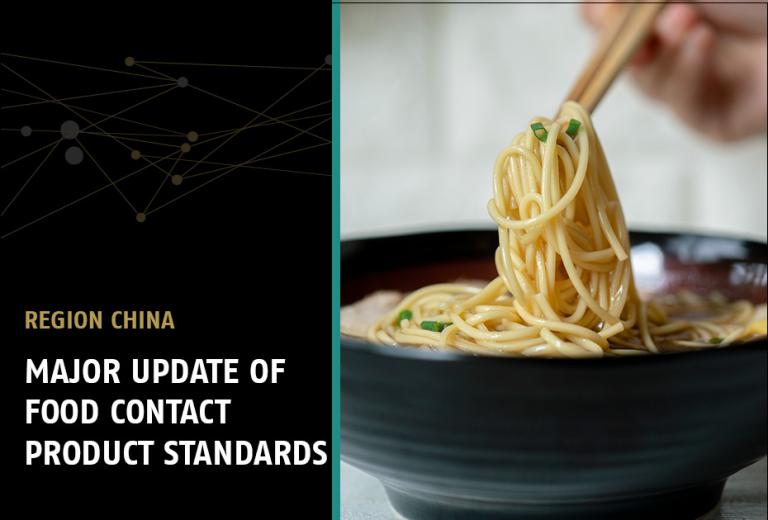Major update of China's food contact product standards (GBs)
On 6 September 2023, the National Health Commission of China (NHC) published five product’s standards for plastic, rubber, metal, printing ink, and multilayer food contact materials. This article focuses on two of the new GB standards, the one for printing ink and the one for multilayer food contact materials.
Food contact printing ink standard (GB 4806.14)
This is the first time China has introduced a standard for printing inks used in food contact materials and products. The official implementation date is 6 September2024.
- Scope of the standard
This standard applies to printing inks used in food contact materials (FCM) and articles, as well as the printing ink layer applied on a given food contact substrate. The definition of the printing ink for food contact, in the standard, refers to a printing ink formulation that is expected to be printed onto a FCM, which is directly or indirectly in contact with food, as well as for cases where a varnish is used in conjunction with a printing ink layer.
- Requirements
First, the general safety requirements from GB 4806.1 need to be considered. Printing ink manufactures as well as printing companies should take necessary measures to ensure the safety of the food contact printing ink and of the printed food contact articles. The production process of the food contact printing ink as well as the printing process onto the food contact substrate should comply with the Good Manufacturing Practice (GMP) requirements presented in GB 31603.
If the printed layer is intended to come in direct contact with the food, the raw materials and additives must be listed in GB 2760 National Food Safety Standard for the Use of Food Additives and its related announcements, and they must meet the corresponding quality specification requirements presented therein.
For indirect contact with the food, the colorants used in the raw materials shall not contain lead, mercury, cadmium, chromium (VI), arsenic, antimony, selenium or other compounds. In addition, the colorants must comply with the requirements of GB 9685 on food contact additives. Other components of the printing ink formulation, where applicable, need to be listed in the list of polymeric resin raw materials approved for use in China in food contact plastics (GB 4806.7), coating (GB 4806.10), and rubber (GB 4806.11) regulations. The additives should be listed in GB 9685 and its announcements and should meet the corresponding requirements. At the same time, substances authorized by GB 2760 can also be used.
With respect to the physical and chemical indicators, the heavy metal residues need to be monitored for the food contact printing inks. For the final printed food contact articles, the overall migration, potassium permanganate consumption, heavy metals (measured as lead), and aromatic primary amines need to be determined.
For the label requirements, it is necessary to clearly indicate on the label whether the product type is for direct or indirect food contact, and the usage requirements, including the appropriate printing substrate and the printing process.
Multilayer food contact materials standard (GB 4806.13)
GB 4806.13-2023 replaces the previous GB 9683-1988 "Hygienic Standard for Composite Food Packaging Bags". The official implementation date is 6 September 2024.
- Scope of the standard
This standard applies to two or more layers of food contact materials composed of different types of materials or materials of the same type that are connected through bonding, hot melting, or other means of composite.
- Requirements
For the raw materials and additives, each layer of food contact material must comply with the requirements of each product standard and relevant announcements.
With respect to the physical and chemical indicators, if there are identical items in each layer, the limit of the item should be determined in accordance with the requirements of GB 4806.1. Among them, the overall migration, potassium permanganate consumption, heavy metals (measured as lead), and other items should be tested according to the requirements of the direct food contact layer.
For the label requirements, the sequence of labeling should be from the outer layer to the direct contact layer with the food, including adhesives, coatings, and printing inks, separated by "/". The labeling of each different type of food contact material should comply with the requirements of the corresponding product standard.
Stay tuned for our series of articles on food contact materials and related China regulations. If you have questions related to food contact compliance, contact knoell FFCM team here.
Link to announcement: http://www.nhc.gov.cn/sps/s7891/202309/799bde70c78d41e79de567542b9db84.shtml

